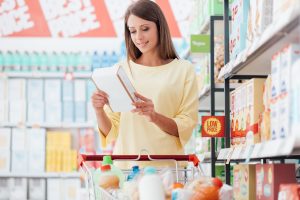Today’s brands, category managers and merchandisers are in a race, constantly jostling for position but frequently finding they’re still grouped together in the home straight of the supermarket aisle. Only a standout performance at point of purchase in those final moments of the race will ensure the winner takes the gold at point of sale.
By Peter Howard.
In this feature we explore POP as an integrated in-store strategy with multiple touchpoints designed to influence shopper behaviour. We also talk to industry experts and look at some Australian companies that specialise in POP initiatives.
Seeking attention
As 71 per cent of shoppers cite food as their most common impulse buy and 85 per cent of impulse buys occur when an item is on special, the opportunity for supermarkets and convenience stores to attract some of that impulse spend is certainly attractive, but are stores maximising the opportunity?
Clearly, it’s important to make specials and promotional products stand out, but as today’s shoppers are being bombarded with almost constant advertising messages, standing out isn’t as easy as it sounds and requires a considered, strategic approach.
Researchers estimate the average Australian adult was exposed in 2019 to between 6,000 and 10,000 ads a day. That’s double the amount in 2007 and has reached the point where people can no longer take it all in.
Now you see it
Having brands displayed in a category and competing next to each other on the shelves makes the deployment of switch messaging simple, but the shelves themselves can make it difficult to achieve an impactful display.
Shelf talkers and aisle fins certainly make a difference, but for greater impact, brands are increasingly using customised POP displays because of their flexibility and almost limitless capacity for customisation. They can be placed anywhere a retailer chooses, adjacent to the category or off location, and repositioned at any time.
Custom POP displays are not only eye-catching, but being a physical object, when positioned well they can disrupt the habitual or routine shopper who otherwise pays little attention to promotional shelf signage. They also cause no problems in terms of sustainability as they’re almost all made from recyclable corrugated cardboard.
Read more in the August issue of Retail World.




